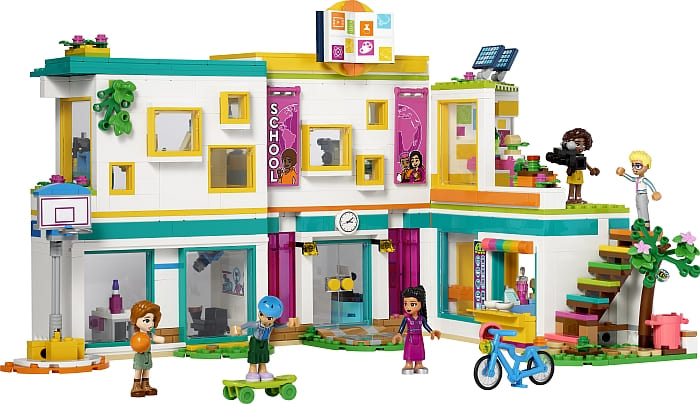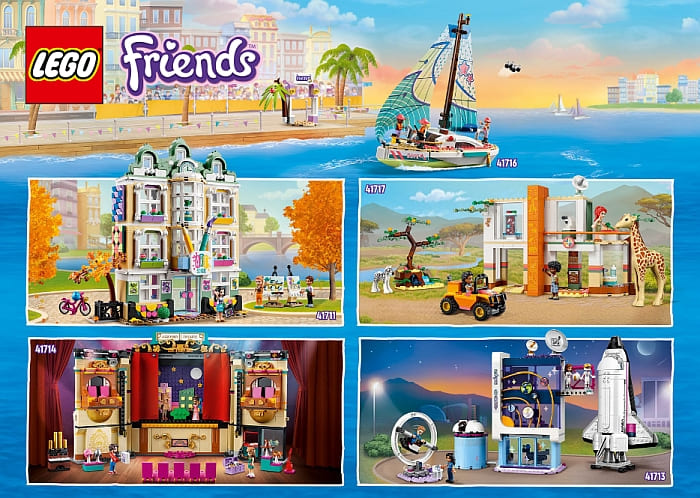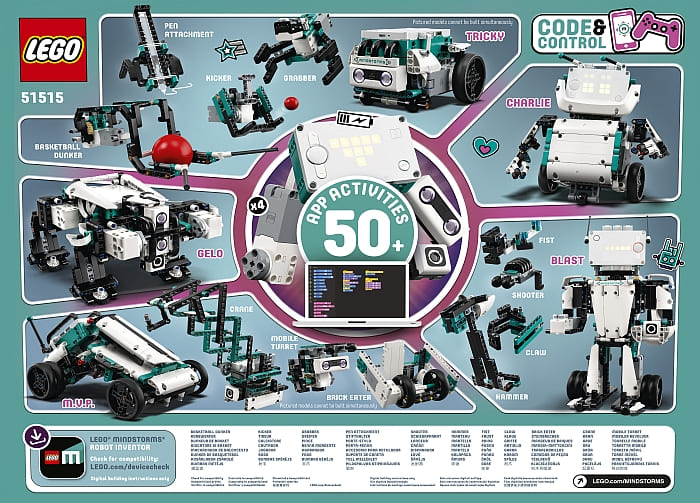In the following press-release published today, the LEGO Group reveals a new generation of LEGO Friends. The re-imagined LEGO Friends characters are more representative of the world that today’s kids navigate, inclusive of gender, culture, ethnicity, physical traits, and abilities, non-visible disabilities, and neurodivergence. The new storylines will explore the ups and downs of friendship, while the characters overcome challenges, obstacles, and differences in today’s modern world. Details below.

A decade on from the launch of LEGO Friends, the LEGO Group has re-imagined the Friends Universe, with the introduction of new diverse characters, to enable more children to feel represented during play. This next generation is designed to celebrate diverse friendships in the modern world.

Because the LEGO Group values children as its role models, this next generation of LEGO Friends has implemented input from kid testing, research, and feedback from letters sent to the company, which all found children had a desire to see themselves, their friends, and their families better represented.


The brand-new universe of authentic, interesting, passionate, and diverse characters includes additions of multiple skin tones, cultures, physical and non-visible disabilities, and neurodiversity. The new sets and series will feature characters with limb differences, Downs Syndrome, anxiety, vitiligo, and a dog with a wheelchair. The new friends also explore and work to overcome modern challenges that they face, passions, obstacles, and differences, all while trying to create friendships.
“At the LEGO Group, we understand that children want the characters they encounter to be more like the diverse personalities they meet in real life”, said Tracie Chiarella, Head of Product, LEGO Friends at the LEGO Group. “We’re continuously evolving our products so that they’re reflective of society today and that’s why we’re proud to launch this brand-new generation of LEGO Friends. We want children to see the new LEGO Friends Universe, both in the physical product and the content we’re launching in 2023, as a reflection of their own friendships and to see the characters as authentic. We have chosen to evolve the LEGO Friends Universe and TV show to be more inclusive in order to give parents and kids more tools to navigate friendship and their emotions as they grow and learn.”
The re-imagined LEGO Friends Universe aims to help kids become better friends to themselves and others while providing emotional and social development through play, to help them better understand individuality, diversity, and the modern world.
Beyond research and insights from kid testing and designers reviewing letters from children, the LEGO Group also revealed recent research that further highlights children’s need for representation.
The LEGO® Play Well Study 2022 showed an overwhelming desire for more representation in play and more discussion on diversity and revealed that parents (97%) believe it is important to discuss the unique individualities between us all, especially mental health (91%), physical disabilities (82%), mental disabilities (81%), and ethnicity (75%). Moreover, parents (85%) say that play and toys can have a key role in helping children learn about diversity (84%).
The research also found that 3 in 4 (73%) children felt that there were not enough toys with characters that represented them and similarly, that 8 in 10 (80%) children would like there to be more toys with characters who look like them. Moreover, children are asking for a fairer, more equitable world with 9 out of 10 (91%) saying they care about everyone being treated equally.
The LEGO Group wants children across the globe to experience the entire Friends Universe as relatable and representative of the real world, both when it comes to products and content. As a result, the storylines of the LEGO Friends TV show have been refreshed in collaboration with the Geena Davis Institute on Gender in Media helping to develop the character’s narratives to ensure they’re relatable, inclusive, and reflective of the difficulties and experiences that children face today, including the ups and downs of friendships.
The new LEGO Friends sets will be available from January 1, 2023, while a LEGO Friends TV special is due to air in February 2023 – kicking off the new TV series. Some of the upcoming new products are as follows.

#41724 LEGO Friends Paisley’s House – 44.99 EUR/39.99 GBP/69.99 AUD/39.99 USD/ 49.99 CAD

#41727 LEGO Friends Dog Rescue Center 59.99 EUR/54.99 GBP/89.99 AUD/59.99 USD/74.99 CAD

#41728 LEGO Friends Heartlake Downtown Diner 29.99 EUR/24.99 GBP/44.99 AUD/29.99 USD/39.99 CAD

#41730 LEGO Friends Autumn’s House 69.99 EUR/59.99 GBP/119.99 AUD/69.99 USD/89.99 CAD

#41731 LEGO Friends Heartlake International School 99.99 EUR/89.99 GBP/159.99 AUD/99.99 USD/139.99 CAD
While we’re waiting for the new LEGO Friends sets, you can also check out the currently available selection at the LEGO Friends section of the Online LEGO Shop.

What do you think? How do you like the changes made to the LEGO Friends line? And what do you think of the upcoming sets? Feel free to share your thoughts and discuss in the comment section below!
And you might also like to check out the following related posts:























